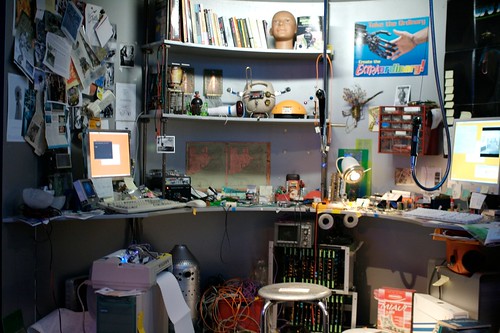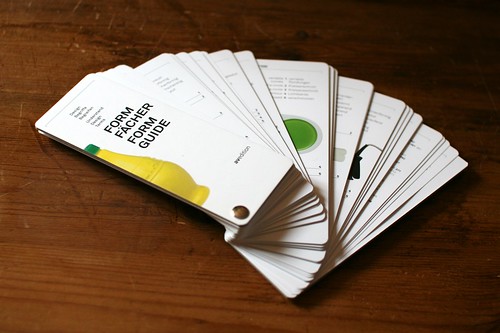Last week saw the first of my lift@home series for this year, in partnership with Imaginove, a French cluster made of video-game companies, animated movie studios and web/mobile design firms.

As an echo to the debate at the Game Designer's conference in San Francisco, we chose to talk about gamification, which is defined in the Wikipedia as:
"Gamification is the use of game play mechanics for non-game applications (also known as "funware"), particularly consumer-oriented web and mobile sites, in order to encourage people to adopt the applications. It also strives to encourage users to engage in desired behaviors in connection with the applications. Gamification works by making technology more engaging, and by encouraging desired behaviors, taking advantage of humans' psychological predisposition to engage in gaming. The technique can encourage people to perform chores that they ordinarily consider boring, such as completing surveys, shopping, or reading web sites."
Given the heated debates lately about this topic, the point was to go beyond this buzzword and discuss the implications of using game mechanics for non-game applications.
In my introduction, I drew a parallel between the Serious Games meme and the Gamification meme... to show that there's a long time interest in translating "something" from games to other domains. My point was that this "something" varies over time: game mechanics, game play, game-like visuals. Interestingly, this transfer can be caricatural. At worse, gamification means "add external rewards such as points or badges to your service" and Serious Games sometimes corresponds to "add 3D graphics to your training program and you'll learning how to use this CRM". This is a bit sarcastic but it's unfortunately the case. Concerning gamification, my introduction focused on some of the limits of this approach:
- Being engaged in a video-game is not just a matter of earning points and rewards, there are different motivational aspects that ranges from learning the interface, discovering the challenges to be completed, the completion of these tasks, the fun of being with others.
- One should distinguish what's called internal motivation (playing the game itself) and external motivations (being rewarded for the task completed). It's as if proponents of gamification only focused on the second one.
- Above all, playing a game is fun because of its design, not just because you can get points (what Steffen Walz called "pointification" in his talk at Lift11) and go from one level to another.
- A gameplay (or a game design pattern) is much more than "earning points" or "collecting artifacts". A game is fun to play because there's a good team of game designers who created it, not just because of basic cooking recipes.
The two other speakers built upon this to demonstrate the limits and opportunities of employing game mechanics. The first one dealt with the importance of this approach for Social Web platforms and the second one showed the potential of game design for urban informatics.

Josselin Perrus
A consultant in User Experience design Josselin started off by showing the drawbacks of external rewards (points, badges). The underlying idea with "gamification" is that designers identify a certain behavior, find a metric that would represent this behavior... and reward the performance of this behavior. In return, this results in participant trying to maximize this metric. Which is very close to performance or sales management with KPI.
Josselin's argument is that this situation is fine in the short term but it doesn't work in the long run because it's not user-centric. For example, the accumulation of badges on Foursquare becomes difficult to understand over time. If you're browsing friends' profile, you see their badges but it's sometimes difficult to get what they mean... because they're only designed as a reward system. A more interesting approach in Social Web design would be to generate rewards as "social indicators": hierarchical cues or categories that are actually relevant for users and which help them to get a perspective on a certain person. Meaningful badges would make users' profile more legible to others.
If indicators became pertinent for others, they would count as intrinsic motivators:
- As a way to access to a representation about oneself: mirroring your activities, giving you the opportunity to learn about your behavior.
- Conveying information to others, showing them implicit cues about your behavior.

Philippe Gargov
Philippe followed up on this by questioning how the video-game culture (and video game mechanics per se) can be a facilitator for urban design. He began his speech by showing what he called a triforce of current urban challenges:
- City 2.0: the need to integrate citizens in public debates,
- Livable city: the importance of favoring more sustainable practices,
- Social innovation: the need to facilitate the participation of citizens in the co-conception of public services.
For each of these challenges, Philippe exemplified how certain services anchored their design in game-related elements: 3D platforms employed to engage citizens in discovering how their neighborhood may evolve, the role (and the limits) of visual codes coming from video-games to be more appealing to users, etc. He then focused on two striking examples:
- Chromorama by Mudlark: a game that shows participants their movements and location as they swipe use their transportation card in the London Tube. The point of such platform is to "connect communities of people who cross paths and routes on a regular basis, and encourages people to make new journeys and use public transport in a different way by exploring new areas and potentially using different modes of public transport".
- Waze: a social mobile application providing free navigational information based on the live conditions of the road (reported by participants who receive rewards for their input).
Philippe concluded by encouraging game designers in the room to participate to this shift. Their expertise and the solution they put together in their games can resonate with urban services... in a way that is not necessarily as limited as what gamification advocates.






 Interface simplicity at its best.
Interface simplicity at its best.











 (A robot tinkerer's desk at the design museum in Zürich)
(A robot tinkerer's desk at the design museum in Zürich) Another interesting keyboard adaptation that I ran across in one my course. This designer is working on a large graphic and needs to drag and drop lots of visual primitives here and there with Illustrator. She found it more convenient to use this quick and dirty solution by using tiny stickers with a visual representation of the graphical elements on each keys.
Another interesting keyboard adaptation that I ran across in one my course. This designer is working on a large graphic and needs to drag and drop lots of visual primitives here and there with Illustrator. She found it more convenient to use this quick and dirty solution by using tiny stickers with a visual representation of the graphical elements on each keys. The "Formfächer" (Formguide) is an instrument I stumble across when visiting the design studio
The "Formfächer" (Formguide) is an instrument I stumble across when visiting the design studio 






